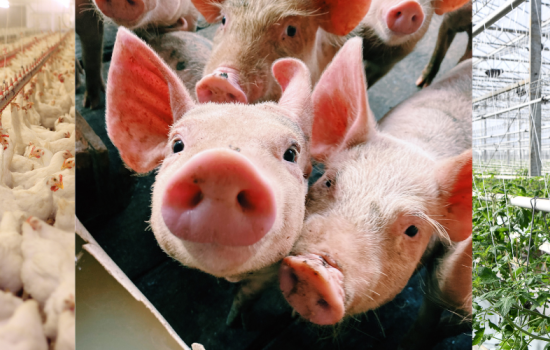The Climate Change Levy (CCL) is a tax charged on the electricity, gas, LPG, coal and coke used by businesses in the UK. However, some businesses that are in energy intensive sectors are able to apply for a discount. This discount is given in return for achieving agreed energy saving targets.
CCL discount scheme is intended to encourage businesses to operate with greater energy efficiency and lower energy usage by meeting reduction targets throughout the schemes existence. It also aims to help the UK meet its legally binding commitments to reduce greenhouse gas emissions.
The NFU is the trade association responsible to DECC for the horticulture, pig and poultry CCL schemes. We, FEC Energy, administer the scheme for NFU as well as providing expert help and guidance to minimise bureaucracy and paperwork.
In order to receive the CCL discount, you have to:
- Sign a Climate Change Agreement - a legal agreement between you and the Government that commits you to meet future energy efficiency targets.
- Return energy and production data at set intervals to prove that you are actually achieving these targets.
Should you miss your targets, you can either leave the scheme or buy carbon allowances to compensate for the amount of energy you have used over and above your target.
How to apply for the NFU CCL Scheme
You will need to provide us with the information required to submit an application. Your application must include the following:
- Detailed calculations showing 70% of total site energy is used on the eligible process.
- Annotated site plans detailing the boundary, buildings and meter locations.
- Description of the primary process carried out on site.
- Energy data and production records for a 12 month continuous period.
- General site information.
Once you are accepted into an NFU sector scheme, you must meet your energy efficiency targets to keep your CCA and continue to receive CCL discount.
You will submit data for a base year which consist of energy consumption and production records. The base year is the year for which the site has data for its energy consumption and CO2 emissions for a 12 month continuous period.
Ideally, the base year should be a continuous 12 month period from January to December 2008. If not, it should be the next available 12 month period during or after 2008. Those who cannot provide data for 2008 but have data for a more recent period will have targets pro rota / re-adjusted.
Reduction targets are set by using your base year Specific Energy Consumption (SEC) by dividing your annual energy usage by your production. For example, a poultry business may find their site has a base year SEC performance of 20kWh of energy per kg meat produced.
Businesses holding CCAs must monitor and report their energy consumption against agreed targets across four two-year target periods – each covering two calendar years – running from 2013 to 2020.
You will be required to submit your energy and production data, at a minimum, every two year period. You will be expected to reduce your SEC by the target for that target period. If you overachieve on your target, surplus tonnes of carbon will be banked and used for future target periods. Meaning, if you over achieve in TP2 by 50 tonnes but underachieve in TP3 by 30 tonnes you will still have 20 tonnes surplus to take into TP4.




